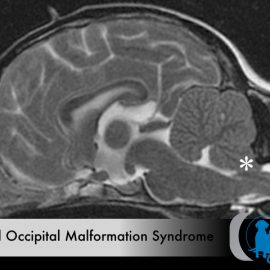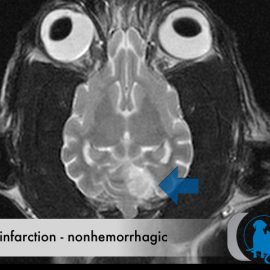Occipital Dysplasia
Etiology Occipital dysplasia is a congenital abnormality of the formation of the occipital bones of the cranium. The most common manifestation of this condition is an underdeveloped occipital bone leading to a dorsoventrally enlarged ("keyhole shaped") foramen... Read More
Cerebellar Hypoplasia
Etiology Cerebellar hypoplasia is a congenital condition that is more common in cats than in dogs. Several types of malformations have been described in cats and dogs, including the following: 1) Agenesis: Part of or... Read More
Caudal Occipital Malformation Syndrome – COMS
Etiology Phenotypic selection has led to variability in canine skull shape. The brachycephalic phenotype was selected initially for its strong bite force. Later, breeds with round heads and foreshortened noses were desired because their facial... Read More
Brain Infarction – Nonhemorrhagic
Etiology Nonhemorrhagic infarctions, otherwise called ischemic infarctions, are the result of the acute interruption of blood flow to an area within the brain. The usual cause for a nonhemorrhagic infarction is the occlusion of an... Read More





